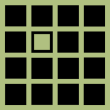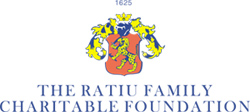UCL School of Slavonic and East European Studies, University College London, 7th Annual International Postgraduate Conference
Inclusion Exclusion
Saturday 18 February 10:00 – 11:30: Panel H1: Identity and Nation
Raluca Soreanu (Central European University): ‘Exploring the space of identification: a tricolour story from the city of Cluj-Napoca’
My study explores the multilayer identification processes related to the display of the system of national symbols in the urban space. The analysis is focused on the use of tricolour Romanian national symbols in Cluj-Napoca, a Transylvanian city in Northwestern Romania.
In short, my study approaches the city as a discourse, as a dynamic text authored by several agents, which compete for the production of meaning by displaying the red-yellow-and-blue symbols. The analysis is organised around two focal points: the assertion of ethnic identities, related to a set of alternative narratives (Romanian vs. Hungarian), and the dynamics of socio-economic identities (elite vs. anti-elite trends) related to the urbanization and industrialization processes.
In my study, I take up a socio-semiotic perspective, which means that the sign systems under scrutiny are linked to their social and historical context, through the study of the ideology they incorporate. My main research method is the semiotic analysis of a photographic archive of tricolour objects in Cluj-Napoca. I also resort to qualitative coding of some semi-structured interviews conducted with a sample of inhabitants.
First, I explore the premises of the tricolour symbolic inflation in Cluj-Napoca: the hyper-signification of the urban space was caused primarily by the need to fill the symbolic void produced by the collapse of the communist system of signs. The city became a space of negotiation and competition for new discourses, articulated in symbolic form. In this context, the nationalistic discourse gained one of the strongest voices in Cluj-Napoca.
The empirical analysis attempts to illuminate how the local political discourse has acted on the ‘docile body’ of the city by resorting obsessively to a collection of tricolour national symbols. This political discourse was in some sense naturalized, as different individual or collective actors engaged voluntarily and spontaneously in the proliferation of the tricolour signs. In this transition from political discourse to spontaneous agency, several regimes of meaning of the tricolour sign were generated.
First of all, if we read the signs in a nationalistic key, we can say that the city becomes an object of political affirmation and repudiation. The excessive number of flags dominating the urban landscape contains a very powerful rhetoric of exclusion. Secondly, the display of tricolour symbols is connected to anti-elitism and to the centre-periphery divide. The newcomers attempt to solve the acute agency crisis related to their socio-economic status by the multiplication of their symbolic gestures. Symbol abuse is an accessible way of re-negotiating public attention and the existing hierarchies of the urban space. The third type of public display of the national colours is instrumental: simply put, the tricolour is a wrapping that sales. After such an extensive career, the ‘tricolour discipline’ has contaminated shop-windows as well.
In the third part of the study I explore the impact of this eccentric symbol abuse on the day-to-day conversation of the inhabitants. Being from Cluj-Napoca forces one into a predefined space of conversation, transforms one into a ‘rapporteur’ of the tricolour parade.
In conclusion, my study examines the way a system of symbols becomes the vehicle for the creation and reinforcement of a set of multilayer (ethnic, socio-economic) us vs. them divides in the urban space.




